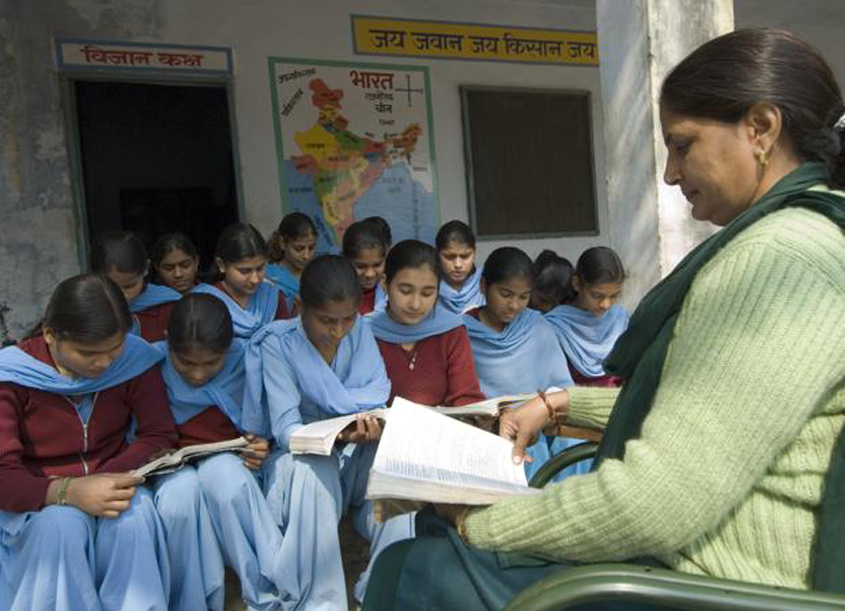RJD announced in its election manifesto that it would spend 22% of its budget on education. Nitish Kumar in his first term as the chief minister of the state had a clear focus on school education but did not carry this ahead in his subsequent terms. Without entering a blame game it is important to fathom what is required. This is not a marginal increase in budget allocation. In a recent national study, we inquired as to what the various states of the country including Bihar, need to spend on the education sector in order to fulfil the promise of the RTE Act? (Bose, Ghosh & Sardana: RTE and the Resource Requirements https://www.eklavya.in/pdfs/Books/RTE_and_the_Resource_Requirements.pdf )
Based on school wise data collected by UDISE for the year 15-16, we could estimate that Bihar requires 45% more teachers at the primary level, 37% more at the upper primary level when compared to the norms prescribed under RTE. At the same time if we look at physical infrastructure we find that 10% of the schools have no building, where 11 lakh children study. Most other schools require additional classrooms. The average strength for primary school was 167 and for middle school this was 466. Schools are overcrowded.
A middle school teacher once commented that if all children come to school there would be just no space anywhere for them to sit! 75% additional classrooms are required compared to what is available. These deficits in the system has been pushing out poorer children and denying them their fundamental right to education. For those who can afford it, they all end up being enrolled in the parallel school-like coaching classes.
What are the constraints for expansion of school supply that have not really been addressed? Given acute land shortage since every inch is cultivated, the alternative is to construct properly two to three storied buildings. At the same there is also a need to create a social atmosphere where local bodies can negotiate & find some land for the village school. This is where political energy could be creative since this is an exercise in fraternity building among all communities. Similarly teacher recruitment has been a vexed issue and local arrangements have only supported a distribution of caste patronage. It is better to work with transparent bureaucratic norms akin to civil service recruitment. The policy of drawing teacher recruits from the maha-dalit groups has been fruitful and should be expanded.
Where will the money come from? In our study for 2015-16, we found that Bihar spends 13.4 % of its revenue receipts on elementary education, whereas the requirement to fulfil the mandate of RTE is 40%. What would be required for recurring expenditure is around Rs 51345 crore per year while it actually spends only 25% of this. This range of shortfall calls for a special allocation for education from the Finance Commission. In our report we have specified 16 states that require funds from the Centre to fulfil the constitutional obligations under RTE. Their own resources would be inadequate. Special grants are even more important during a pandemic since revenues are very low. One should not allow this situation to increase the out of school component of children. This would be irreversible.
There’s a section of experts who would ask us not to focus on inputs. They would be wasted. Their argument is to impose conditions that only improve outcomes of the process and that this should determine supply of additional inputs. Providing incentives to improve outcomes is their suggestion.
However government schools are not autonomous independent units amenable to incentives. They respond or react to the system of school administration as a whole and much more to emanating political signals.
This incentive-management system for public school education is a sure formula to achieve a low level equilibrium and the creation of a vast parallel private schooling. As the present situation indicates such deprivation can continue for decades.
On the other hand, is the need for channelizing the energy of this mandate to reform the working of school administration.
We have seen turnarounds in some other states where the school administration has taken effective steps to change the morale and ambience of government schools along with inputs for infrastructure. Adequate financial allocation is an enabling and necessary condition, but not sufficient to bring out the desired outcomes. It has to be accompanied by social policy and an atmosphere for transformation. The historical legacy of deficits is deep. Look at this with the lens of expanding social justice. Then the path would be clear and eminently doable.
Arvind Sardana is an educationist and the former Director of Eklavya, Bhopal, Madhya Pradesh.


